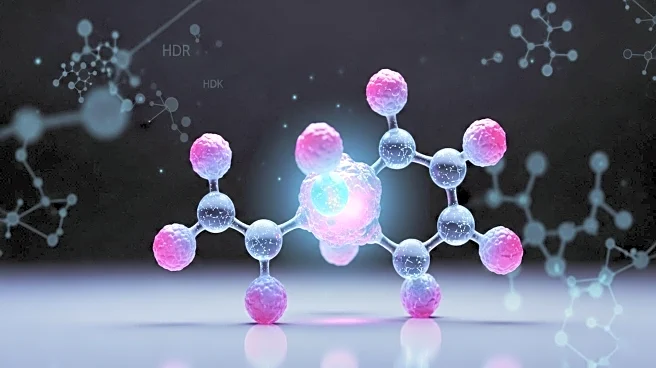What's Happening?
Recent studies have explored the therapeutic potential of Salvinorin A, a compound primarily known for its psychoactive properties. A systematic review and meta-analysis of preclinical studies have highlighted its effects on addiction, pain, depression, and cerebrovascular diseases. Salvinorin A has shown anti-addictive properties, particularly in reducing cocaine-seeking behavior in rats. It also demonstrated antinociceptive effects in pain models, increasing pain thresholds and reducing inflammation. However, its rapid metabolism and potential adverse effects, such as anxiety and motor impairment, pose challenges for clinical application. The compound's pharmacokinetic profile indicates a rapid onset and fast peak concentrations, which could be beneficial for acute treatments but also complicates its use due to intense dissociative effects.
Why It's Important?
The findings on Salvinorin A are significant as they offer insights into alternative treatments for conditions like addiction and pain, which are major public health concerns in the U.S. The compound's ability to modulate neurological and psychiatric disorders could lead to new therapeutic strategies, especially for patients who do not respond to existing treatments. However, the adverse effects and rapid metabolism highlight the need for careful consideration in clinical settings. The research underscores the importance of developing analogues with optimized profiles to mitigate side effects while harnessing therapeutic benefits.
What's Next?
Future research is likely to focus on developing analogues of Salvinorin A that retain therapeutic benefits while minimizing adverse effects. Clinical trials may be necessary to evaluate its safety and efficacy in humans, particularly for addiction and pain management. Researchers may also explore its potential in treating other neurological disorders, given its neuroprotective properties observed in animal models. Collaboration between pharmaceutical companies and research institutions could accelerate the development of viable treatments based on Salvinorin A.
Beyond the Headlines
The exploration of Salvinorin A's therapeutic potential raises ethical and regulatory questions, particularly concerning its psychoactive effects. The compound's use in treating addiction could challenge existing drug policies and necessitate new frameworks for clinical use. Additionally, the development of analogues may lead to intellectual property debates and influence the pharmaceutical industry's approach to drug development.










